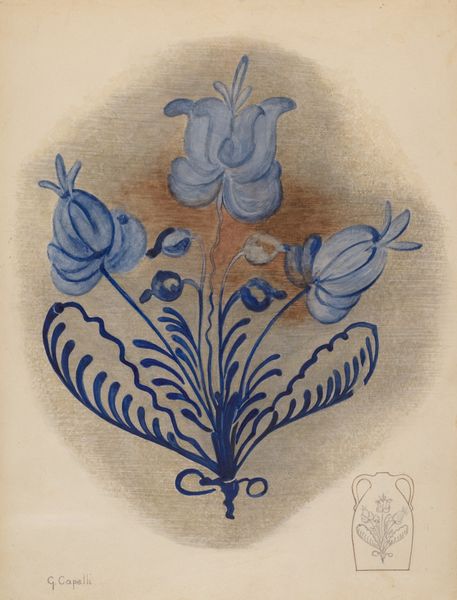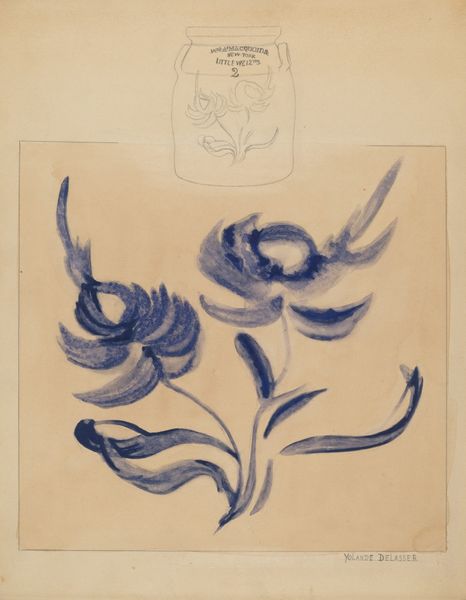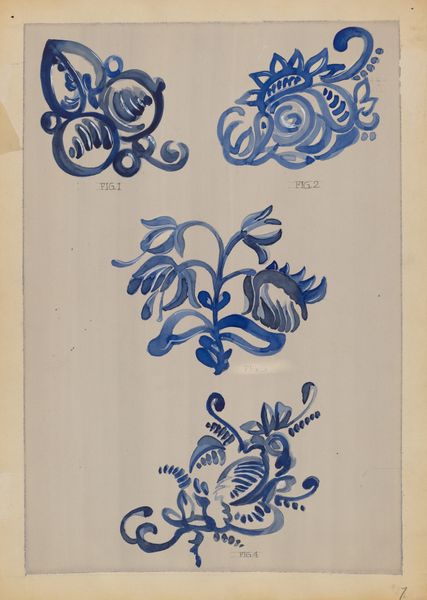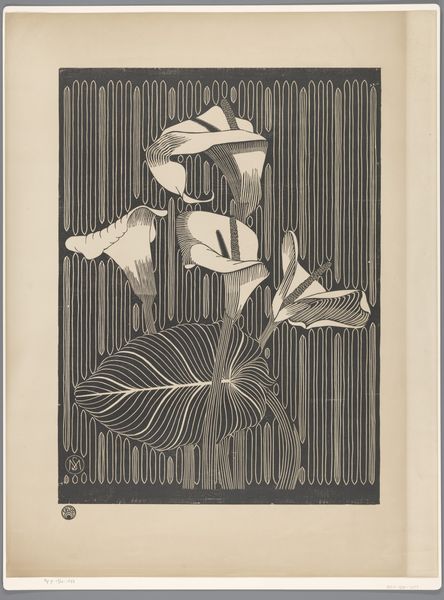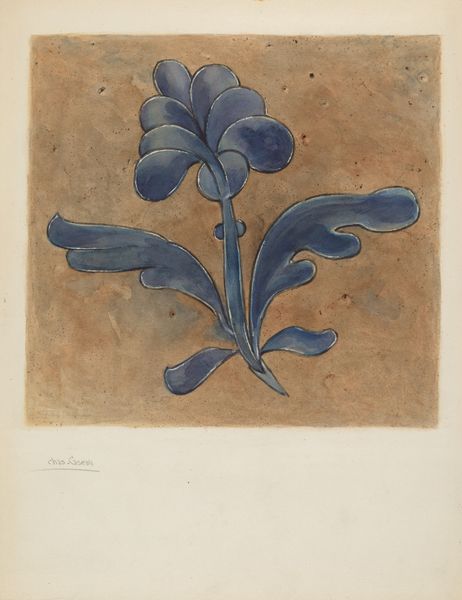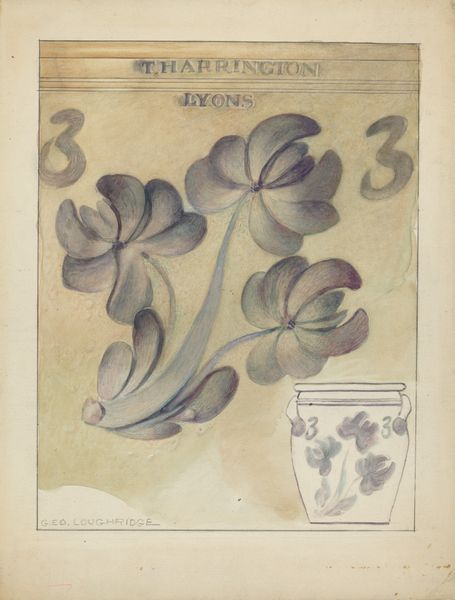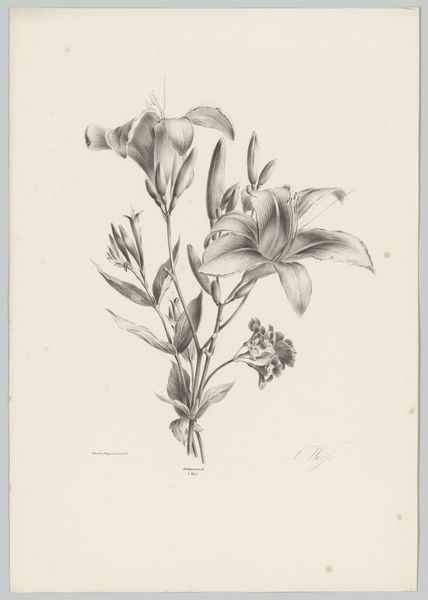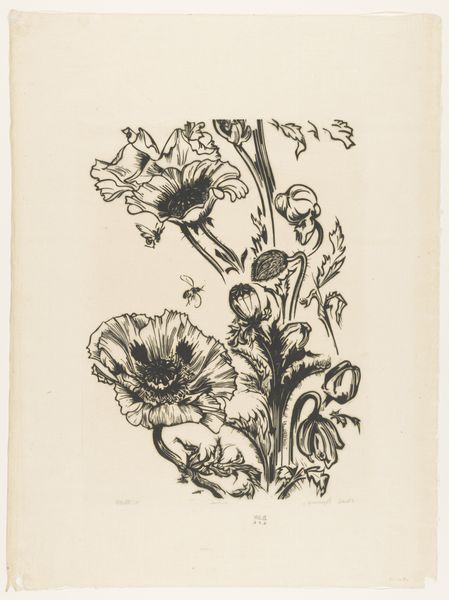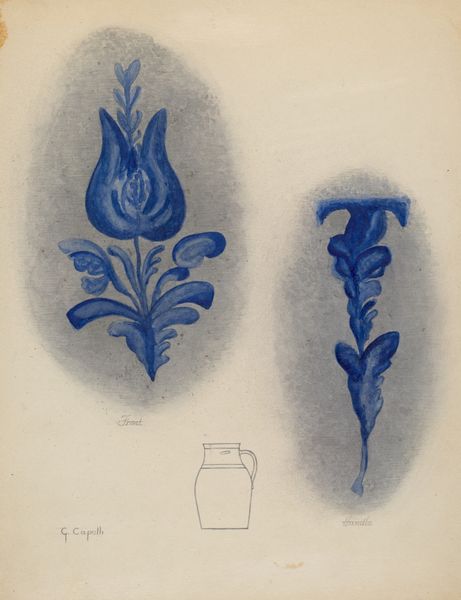
drawing, paper, watercolor
#
drawing
#
paper
#
watercolor
#
folk-art
#
decorative-art
#
watercolor
Dimensions: overall: 28.9 x 22.9 cm (11 3/8 x 9 in.) Original IAD Object: 18 1/2" High 8 1/4" Dia
Copyright: National Gallery of Art: CC0 1.0
Curator: Looking at this watercolor drawing entitled "Churn," made around 1937 by Charles Caseau, I'm struck by its whimsical, almost dreamy quality. Editor: Yes, it's quite soothing. The blue monochrome palette against the warm paper gives it an antique feel. The floral motif feels both familiar and a little... folksy? Curator: That’s an apt description. Folk art, and decorative art, are definitely touchstones here. Caseau seems to be referencing the painted decoration found on traditional butter churns and other utilitarian objects of the period. The style nods to a revival of interest in early American crafts happening in the 30's. Editor: The repetition of these somewhat stylized flower and leaf patterns definitely speaks to a decorative impulse. I see this same imagery showing up over and over throughout folk art traditions – almost archetypal forms blooming again and again. Curator: Indeed. These motifs would have held very specific connotations for the rural communities, markers of both identity and a connection to the land during a time of immense upheaval. The rise of industrial production was threatening traditional ways of life, so art, like this, becomes a statement of values. Editor: Right, these emblems act as visual anchors linking individuals to a collective memory of self-sufficiency and craft, not to mention a time before rampant consumerism. Is the churn shape a recurring image itself? Curator: Yes, that little sketch, alongside the lettering “J. Fisher & Co. Lyons, N.Y.” tells us this is not only about any churn, but one churn maker in particular. Perhaps a shop drawing intended to show possible designs. Editor: The presence of those labels transform this from just a pretty watercolor to something of a company statement and archive document. It offers such a rare window into the artistic tastes embedded within the economic structure of a small, early 20th-century business. Fascinating! Curator: I agree! Seeing Caseau’s design, we begin to see art’s role woven into everyday production, and understand that every object has its own complex cultural history. Editor: I see more than just the product. These abstracted forms speak about deeper symbols rooted in rural society. It adds even more resonance when you consider Caseau might be evoking a collective nostalgia and history through the image on the churn. Curator: Ultimately this humble drawing, brought into the gallery context, encourages to appreciate that decorative impulse within folk objects, and connect it to broader stories of art and identity.
Comments
No comments
Be the first to comment and join the conversation on the ultimate creative platform.
